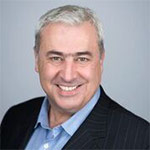
The business I sold a majority of to an EOT was Ovation Finance, a financial planning firm.
When a client receives financial advice, a basic requirement is that the advice given should be appropriate to their circumstances.
At the simplest level this might just mean that their investment portfolio aligns with their attitude to risk.
At the fullest end of the spectrum, it might be a cash flow forecast and detailed financial plan which is aligned with their core values and life motivations.
Poor client outcomes happen when an adviser has one solution, which they apply irrespective of the client’s individual situation. Hence the famous quote by Abraham Maslow: “If the only tool you have is a hammer, you tend to see every problem as a nail.”
Giving – and Receiving – Tailored Advice
If the advice you give is tailored to the clients’ needs, then surely the advice that you receive should also be tailored to you. That includes advice about how to run and grow your business.
I speak with many business owners about their practices. Many (half?) are financial advisory companies. We usually discuss the future of their business, perhaps growth, service proposition, and succession plans.
Invariably they have previously taken advice from other sources, perhaps their accountant, or business books, or consultants.
I see a lot of communality in the advice that these firms receive. That’s mainly because much of the advice is good advice. Sometimes, however, one suspects that sometimes a hammer may have seen a nail.
Here are a few examples of business advice that gets repeated irrespective of the recipient.
Turnover For Show
Company #1 was told that they should aim for turnover of £1m.
Round figures like this always make me nervous – is this really the turnover the company needs to achieve in order for the owners to get from the business what they want?
After some discussion, we concluded that the owner actually only needed a turnover of c£750,000 in order to reach the profit levels that they wanted. This meant that they did not need to take the risk and stress of the additional advisors that they would have needed to reach the magical £1m figure.
What You Make
Owner of company #2 was feeling stressed because they had a target of 30% profit margin, and they were only achieving 22%.
Let’s leave aside the fact that many non-financial services companies could only dream of a profit margin of 21%. The amount of actual profit from the 21% margin was more than enough for her to achieve what she wanted, both in the business and in life.
In addition, the company was in a growth phase at the time, having invested in new employees. A 21% profit margin was actually extremely healthy for the state of their business at that time. The stress from having a fixed 30% target was completely unnecessary.
Non Profitable Clients
Lots of advisors and gurus have strong opinions on what is right and what is wrong – I know I certainly do!
In one recent online exchange, one guru told a group of advisors that they were idiots if they retained non-profitable clients.
If your objective is to maximise the profit of your business, then I would agree with this advice. Many firms, however, have additional objectives – such as being proud of what they do.
Of course, no business is going to last with too many non-profitable clients. But non profitable clients provide some of the proudest moments for financial planners, helping people in times of need can be a great source of pride.
Then there are those non profitable clients who do become profitable at a later date – and refer other, profitable, clients.
Bespoke Advice
The advice you give, and the advice you accept, should be based on the circumstances of the individual. Before you start taking action on what you may have read in a book, or from a ‘guru’ on social media as being the only and the right way, it’s worth taking time to consider what do you want your business to be.
What impact will it have in the world?
I’m making no judgement here – if you want to maximise profit maximise sale price, crack on.
But if increasing average fee income per client is secondary to increasing the wellbeing of your clients, or if you would like to achieve financial security without necessarily having the stresses and risk of growing your business beyond your comfort levels, then just make sure that the advice you’re getting is right for you.
Chris Budd helps business to transition for life beyond the founder – if you’d like to know how he might help your business, email him on chris@theeternalbusiness.com







